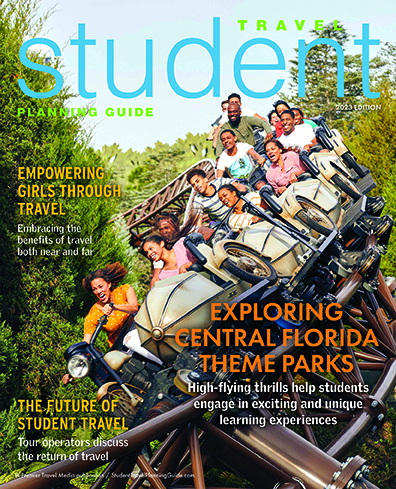At the turn of each calendar year, crystal balls are out everywhere. Instead of looking at the next 12 months, we looked at what lies ahead in the next few years in student travel as we build up to what is projected to be a $320 billion industry by 2020.
This will challenge the entire student travel industry to evolve with the demands of this young, tech-dependent user base. Here’s what you can expect:
The Low-Cost Carrier Model Exploded
The no-frills low cost carrier model will be on steroids. Some students will cram everything they need (no matter the length of the trip) into a carry-on to avoid baggage fees and they won’t care that they don’t get a soda onboard, as long as there is free Wi-Fi. Other low-cost carrier “power users” will be able to take advantage of the growing frequent flier programs that now allow them to take advantage of the “extras” they charge for otherwise.
Routes will be cheaper than they had been in the five years prior, which were already at all-time lows. As one example, $500 will take you from New York to Vietnam (right now $500 can get you from New York to Oslo on a low-cost carrier like Norwegian Air). Relative to median incomes, there will never have been a cheaper time to travel – this will be evidenced by price differentials on popular routes, like travel from the US to China. Student travelers will be the first to take advantage of this (and at a greater uptake than the general market), as they have the flexibility to book as soon as they see a cheap price.
The #LaterGram is Dead

Four Friends on Vacation Visiting Pisa
We will look back at a time when data roaming caused students to travel with their hands tied – keeping their phones in airplane mode throughout most of their trips. No more rushing to cafes and lobbies for Wi-Fi access. A generation of student travelers criticized for “living on their phones,” that grew up on Snapchat and Instagram will experience faster connection speeds through powerful always-on networks. This connectivity allows them to communicate with their friends on their flight to London, use improved voice prompts to get information on anything instantly and share photos and videos with family and friends in real-time as they are experiencing it. Stagnant Facebook updates are a thing of the past – travelers use instant high-definition services to take family and friends with them on their trip.
There is a constant communication stream, not #latergrams, and certainly no standalone digital cameras. Communication used to cost something (stamps, faxes, credits for long-distance phone calls in dated internet cafes), but when it’s free, it’s not a message, it’s a stream.
Students Ditch Their Flip Flops and Spring Break Abroad
StudentUniverse expects to see international leisure travel continue to grow as students go farther than ever before for what used to be in-market events, like spring break. Declining fuel costs are making it cheaper than ever before to travel. Why go to Miami for spring break when getting to Europe is so cheap? For spring break last year, 43% of StudentUniverse’s bookings were for international travel (15% to Europe) while only a third of students (32%) headed to more traditional beach locations. Some of this is students using their spring break to visit friends studying abroad, while others were looking for a spring break that would allow them to do something worthy of talking about (like a voluntour) during job interviews.
At the same time, cheap flight deals to the US and increasing numbers of spring break suppliers in the UK have made spring break a concept gaining popularity amongst British students as well.

close up portrait of hiker looking at the horizon
Technology Powers the Student Travel Experience More Than Ever
Service commerce companies will accelerate the use of technology to provide travelers with better services pre, during and post travel. Personalization has been a top priority for e-commerce players for years. We keep hearing about machine learning and we’re even seeing the first signs of AI in travel. By 2020, early adopters and tech-dependent travelers, like students, will rely on virtual travel agents, expect accommodation stays without human intervention, test drive destinations and products with virtual reality services, and demand hyper-local hook-ups from their travel dealers.
Hotels and Hostels Revise their USPs
With established alternatives like apartment rentals, couches for rent and new on-demand services, young travelers will look to hotels and hostels for more than just a clean room. Hostels are no longer just an ultra-budget alternative, but hotel/hostel fusions with large, hip common areas, free Wi-Fi and more private rooms are the norm, not the exception. Social interaction and effortless access to local experiences will drive success for hotels. The concierge relies on new technologies that connect large networks of travelers to optimize the travel experience.
As we look even further ahead to 2020, the student travel market will have doubled in size over the last five years. A once fragmented and underserved market is now front and center. Suppliers and destinations prioritize this market segment as highly as business travelers, recognizing the long-term benefits of building a customer base early in their life-cycle. The availability of student travel deals is turbocharged and more and more students are taking advantage of them.
Low-cost long-haul carriers, record capacity to Asian markets, modernized hostels and a social media generation with contacts all over the world – this is a new generation of jetsetters. The demands of Gen Z will come quickly on the heels of Millennials and those best equipped to pivot and serve them will define a new standard for travel experiences.






